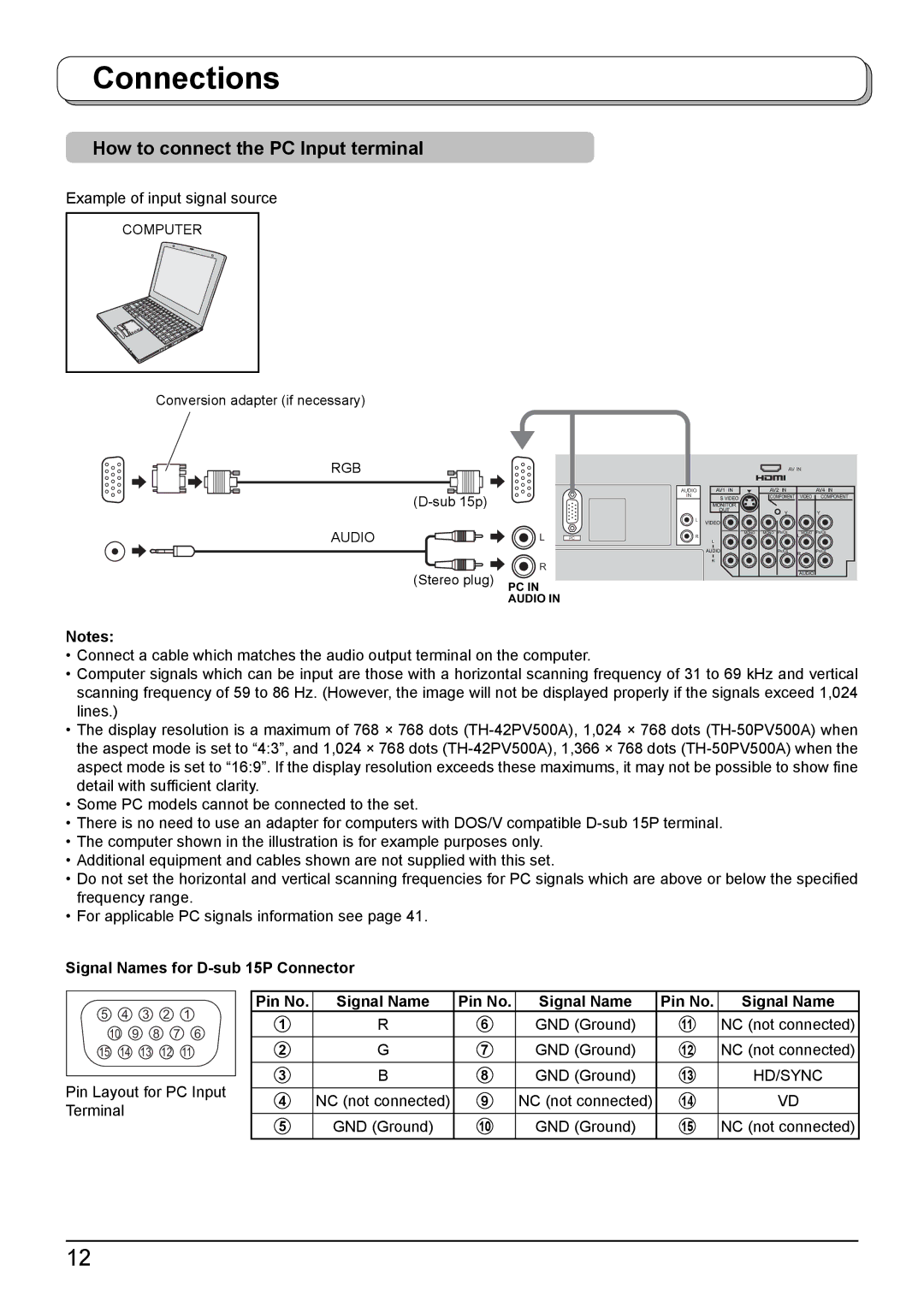
Connections
How to connect the PC Input terminal
Example of input signal source
COMPUTER |
Conversion adapter (if necessary) |
|
|
RGB |
|
|
|
| |
AUDIO | L | PC |
(Stereo plug) | R |
|
PC IN |
| |
| AUDIO IN |
|
|
| AV IN |
| |
AUDIO | AV1 IN | AV2 IN |
| AV4 IN |
IN | S VIDEO | COMPONENT | VIDEO | COMPONENT |
|
|
|
| |
| MONITOR |
|
|
|
| OUT | Y |
| Y |
|
|
| ||
L | VIDEO |
|
|
|
|
|
|
| |
R | L | MONO MONO PB/CB | L MONO | PB/CB |
|
|
|
| |
| AUDIO | PR/CR | R | PR/CR |
|
|
|
| |
R
AUDIO
Notes:
•Connect a cable which matches the audio output terminal on the computer.
•Computer signals which can be input are those with a horizontal scanning frequency of 31 to 69 kHz and vertical scanning frequency of 59 to 86 Hz. (However, the image will not be displayed properly if the signals exceed 1,024 lines.)
•The display resolution is a maximum of 768 × 768 dots
•Some PC models cannot be connected to the set.
•There is no need to use an adapter for computers with DOS/V compatible
•The computer shown in the illustration is for example purposes only.
•Additional equipment and cables shown are not supplied with this set.
•Do not set the horizontal and vertical scanning frequencies for PC signals which are above or below the specified frequency range.
•For applicable PC signals information see page 41.
Signal Names for D-sub 15P Connector
5 4 3 2 1
10 | 9 |
| 8 | 7 | 6 | |
15 | 14 |
| 13 | 12 |
| 11 |
Pin Layout for PC Input Terminal
Pin No. | Signal Name | Pin No. | Signal Name | Pin No. | Signal Name |
1 | R | 6 | GND (Ground) | 11 | NC (not connected) |
2 | G | 7 | GND (Ground) | 12 | NC (not connected) |
3 | B | 8 | GND (Ground) | 13 | HD/SYNC |
4 | NC (not connected) | 9 | NC (not connected) | 14 | VD |
5 | GND (Ground) | 10 | GND (Ground) | 15 | NC (not connected) |
12
